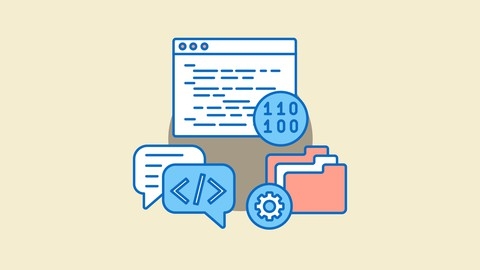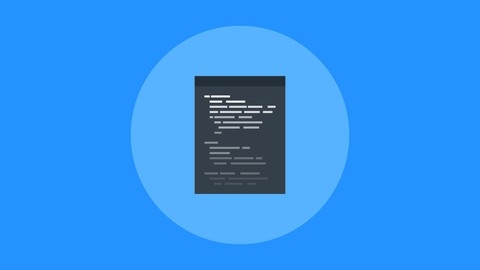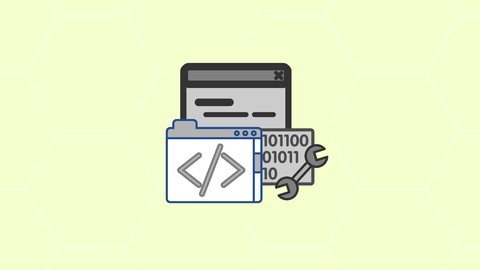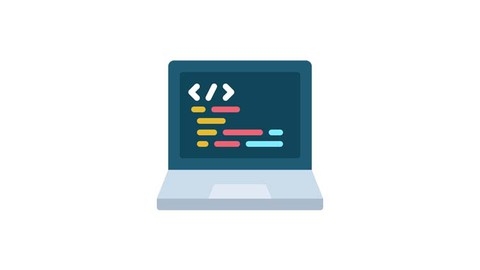Fortran, a powerful and enduring programming language, holds a prominent position in scientific computing and numerical analysis.
It’s a language designed for high-performance computing, capable of handling complex mathematical calculations with efficiency.
Learning Fortran can open doors to a world of possibilities, allowing you to develop sophisticated algorithms, analyze vast datasets, and contribute to groundbreaking research in fields like physics, engineering, and finance.
Finding the perfect Fortran course on Udemy can feel like searching for a needle in a haystack.
You’re looking for a program that is comprehensive, engaging, and taught by experts, but also caters to your learning style and specific goals.
You want to be sure you’re making a worthwhile investment of your time and money.
For the best Fortran course overall on Udemy, we recommend Fortran For Beginners.
This course is your comprehensive guide to learning Fortran, starting with the basics and progressing to more advanced concepts.
It features a clear and structured approach, taking you from setting up your development environment to building real-world applications.
The course’s strength lies in its hands-on approach, with practical examples and exercises that solidify your understanding.
You’ll learn everything from basic programming fundamentals to working with modules and derived types, providing a robust foundation for your Fortran journey.
While Fortran For Beginners stands out as our top choice, there are other excellent options available to suit different needs and interests.
Keep reading to discover our curated list of the best Fortran courses on Udemy and find the perfect match for your goals!
Fortran For Beginners
You will start by setting up your development environment on Windows, Mac, or Linux, and writing your first Fortran program.
The course covers the fundamentals of programming, including variables, expressions, conditional statements, and loops.
You will learn how to work with scalars and arrays, as well as how to make your programs interactive by reading user input and writing to files.
The course also includes a walkthrough of building a Todo app, which will solidify your understanding of the concepts covered.
Moving on, you will dive into more advanced topics such as subroutines, functions, modules, and derived types.
The course also touches on automating the compilation process with Make and exploring compiler options.
Throughout the course, you will encounter quizzes and exercises to reinforce your learning.
The syllabus also covers best practices for structuring larger programs and following coding style conventions.
You will learn through hands-on examples and practical exercises, ensuring that you can apply your knowledge to real-world projects.
Intermediate Fortran
The course starts with an introduction to Fortran, covering the basics you need to get set up and running.
But it quickly dives into more advanced topics that will take your skills to the next level.
You’ll learn about procedure attributes like pure and elemental procedures, which can make your code more efficient and easier to maintain.
The course also covers recursion, a powerful technique for solving complex problems.
And you’ll explore abstract interfaces, which allow you to write more flexible and reusable code.
But the real meat of the course is in the data structures section.
You’ll learn how to implement linked lists, including heterogeneous lists that can store different data types.
And you’ll dive into trees, a fundamental data structure for organizing and manipulating hierarchical data.
It also covers important patterns and principles that will help you write better, more maintainable code.
You’ll learn about data hiding, which helps you encapsulate and protect your data.
And you’ll explore the open-closed principle, which encourages you to write code that’s easy to extend without modifying its existing behavior.
Throughout the course, you’ll also learn about composability, a key principle that allows you to build complex systems from smaller, reusable components.
This will help you write code that’s more modular and easier to maintain over time.
Beginning Fortran for Science and Engineering Students
This course starts with the basics of Fortran, covering topics like data types, variables, operators, and input/output operations.
You’ll learn how to write simple programs and use intrinsic functions.
From there, the course dives into control structures like branching with IF-THEN-ELSE and CASE constructs, as well as different types of loops such as counting DO loops and WHILE loops.
You’ll also learn how to use the CYCLE and EXIT statements to control loop execution.
Arrays are a crucial topic covered in depth, including how to declare and use them, as well as intrinsic functions for matrix operations.
This is particularly useful for scientific and engineering applications.
The course also covers input/output operations in more detail, including formatted PRINT and WRITE statements, as well as working with formatted and unformatted files.
You’ll learn how to write your own functions and subroutines, as well as how to use modules to organize your code.
These are essential skills for writing modular and reusable code.
Additionally, the course touches on some more advanced topics like timing your code and using the DISLIN graphics library for data visualization.
There are even examples of parallel programming using OpenMP, including loop-level parallelization and solving the Poisson equation using a Red-Black iterative scheme.
Fortran Programming Complete Course
You’ll start with the basics, learning what Fortran is, how to set up your development environment, and how to run programs.
From there, you’ll dive into elementary Fortran concepts like data types, variables, expressions, and simple input/output.
The course then builds on these foundations, teaching you about control structures like loops and conditional statements.
You’ll learn how to work with characters, named constants, and intrinsic functions.
As you progress, you’ll explore program preparation techniques like flowcharts and structured programming with procedures.
Arrays are a major focus, covering topics like mean and standard deviation calculations, array rules and notation, sorting algorithms like bubble sort and quicksort, and dynamic allocatable arrays.
You’ll also learn advanced input/output techniques, character handling, and how to work with derived data types and structures.
The course dives into more advanced concepts like pointer variables, linked lists, and abstract data types.
It covers simulations with random number generation, modeling scenarios like coin flips, dice rolls, and bacterial growth.
You’ll learn about matrices and their applications in areas like graph theory and numerical methods.
Throughout, you’ll apply these concepts to practical examples like loan calculations, population modeling, student records management, and solving differential equations.
The course emphasizes good programming practices, covering topics like program style, error handling, and code optimization.
The Complete Course of Fortran Programming 2024
This course starts with an introduction to Fortran, covering its history, features, and applications.
You will learn how to set up your development environment, including installing a Fortran compiler like G Fortran and configuring an IDE.
Moving forward, you will dive into the fundamentals of Fortran syntax and data types, such as integers, real numbers, logical values, and character strings.
The course covers input and output operations, including standard input/output, file handling, and error handling techniques.
Conditional statements and looping structures are essential for controlling program flow, and this course provides a thorough understanding of these concepts.
You will learn about programming constructs like SELECT CASE, DO loops, and how to use EXIT and CYCLE statements.
Arrays and matrices are crucial in Fortran programming, and the course covers their declaration, multidimensional arrays, and various operations and manipulations.
You will also learn about procedures, functions, and how to work with parameters and arguments.
Dynamic memory management and pointers are essential topics, and the course covers static and dynamic memory allocation, as well as the use of pointers.
Additionally, you will explore custom types and their relationship with pointers.
Numerical computations and mathematical libraries are essential for scientific computing, and this course covers mathematical functions, operations, integration, differentiation, interpolation, and curve fitting.
File handling and data processing are crucial skills, and you will learn about file descriptors, reading from and writing to files, and testing file operations.
Debugging and error handling are vital aspects of programming, and the course covers common errors, debugging techniques, and effective error handling strategies.
Optimization and documentation are also covered, including code optimization techniques, organization and documentation practices, and performance tuning.
The course delves into scientific computing, covering libraries and packages, eigenvalue computations, and parallelism.
Finally, you will apply your knowledge by working on three final projects: a BMI Calculator, a Graphing Calculator, and a Version Control System (VCS).
Throughout the course, you will gain hands-on experience with Fortran programming, enabling you to develop proficiency in this powerful language used extensively in scientific and engineering applications.
Fortran Programming Exam Questions Practice Test
The course focuses on providing a comprehensive set of practice tests that cover various topics in Fortran programming.
You will encounter questions that test your understanding of Fortran syntax, data types, control structures, arrays, subroutines, and more.
Each practice test simulates the actual exam environment, helping you get comfortable with the format and time constraints.
As you work through the practice questions, you’ll receive detailed explanations for the correct answers.
This will reinforce your knowledge and help you identify areas where you need further study.
The course also includes tips and strategies for effective exam preparation and time management during the actual test.
By completing this course, you will gain confidence in your Fortran programming skills and be well-equipped to tackle any Fortran programming exam.
The extensive practice provided will ensure you are familiar with the types of questions commonly asked and can apply your knowledge effectively under exam conditions.






